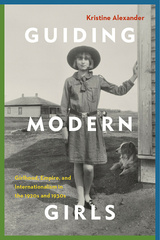
From Slave Girls to Salvation
Gender, Race, and Victoria’s Chinese Rescue Home, 1886-1923
From its origins as a project to rescue Chinese prostitutes and slave girls from a life of supposed depravity, the Chinese Rescue Home became a feature of the moral and racial landscape of Victoria – a place where the Methodist Women’s Missionary Society attempted to reform Chinese and Japanese girls and women, in part by teaching them domestic skills meant to ease their integration into Western society. Between 1886 and 1923, the home sheltered over 400 Chinese and Japanese women. Yet, despite the historical significance of this important institution little has been written on its history. Drawing on a rich collection of archival materials, From Slave Girls to Salvation uncovers the organizational hierarchies, as well as the religious and racial tropes, which permeated the home. Shelly D. Ikebuchi uses the concept of domesticity as a tool for examining the history of Chinese and Japanese immigration in BC. In doing so, she expands our understanding of the complex interplay of gender, race, and class in the province during this time period.
Students and scholars of women’s and gender studies; Chinese, Japanese, and Asian Canadian history; BC studies; migration; and critical race studies will want this book on their shelf, along with anyone interested in the history of the Pacific Northwest in the late 1800s and early 1900s.
From Slave Girls to Salvation brings to life the complex interplay of gender, race, and class in turn-of-the-twentieth-century Victoria. It sheds long-overdue light on one of the few crosscultural, cross-racial institutions in an otherwise segregated society. The theoretically informed, empirically grounded account will generate much discussion and debate in the years to come.
Ikebuchi’s From Slave Girls to Salvation offers a careful postcolonial and feminist reading of Victoria’s Chinese Rescue Home in the late-nineteenth and early-twentieth centuries. The Rescue Home has regularly been referred to in passing, but Ikebuchi gives it sustained and serious attention, and the result is a useful intervention to studies of race and gender in Canada.
Introduction: Breaking Ground
1 Foundations of Stone: Victoria and the Chinese Rescue Home
2 Pillars of Domesticity and the “Chinese Problem”
3 Crossing the Threshold: Interrogating the Space and Place of Victoria’s Chinese Rescue Home
4 Outside the Walls of the Home: Men, Marriage, and Morals in the Public Arena
5 Roofs, Rafters, and Refuge: The State, Race, and Child Custody
Conclusion: Race, Gender, and National Imaginings
Notes; Appendix: Sources and Methodology; Bibliography; Index










